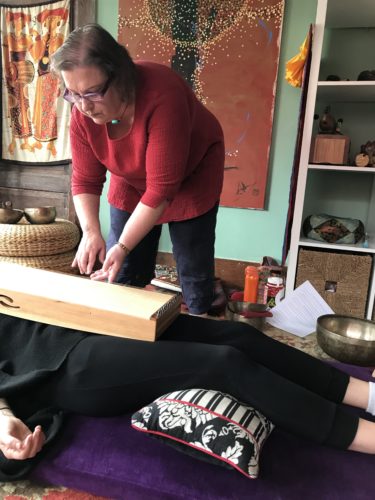We are huge fans of sound as a modality for our healing work and whether you’re in a situation with chronic physical pain or dealing with anxiety and stress, music and sound can be incredibly beneficial.
I was fortunate to to be able to review a sound healing course that Finnish-born Minna teaches in the East Bay (over the bridge from San Francisco for those who don’t know the area very well).
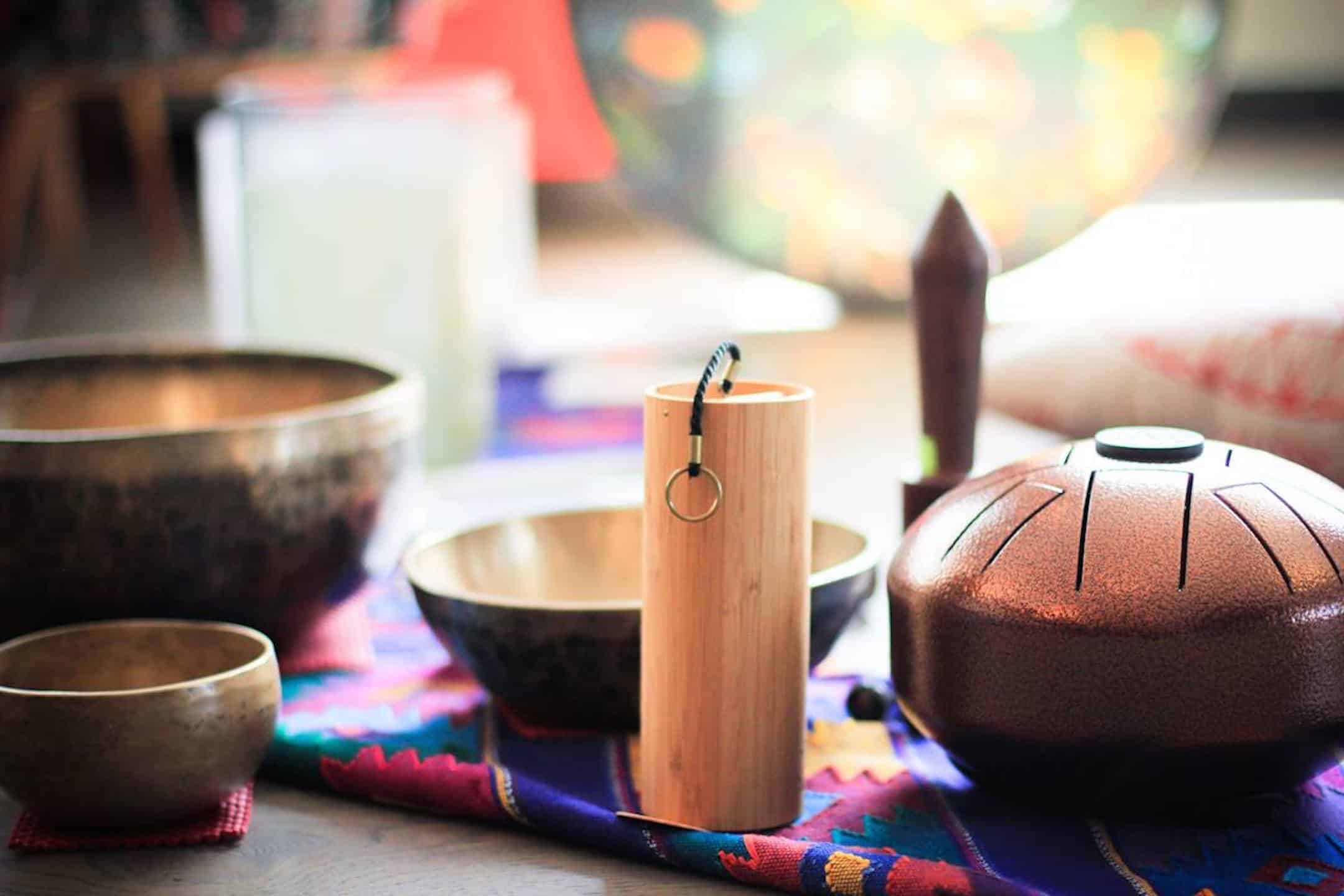
Some of Minna’s instruments. Courtesy: Minna.
Minna’s Tips Before You Begin!
One of the things I really love about the way that Minna presents the coursework (which runs across a full weekend) is that she does so with heart, authenticity and ethics. You see, if you don’t have a personal story, then it‘s much harder to relate to a client you are working with, to resolve their life‘s ‘story,’ and by ‘story‘, I mean the one that may have contributed to picking up an illness to begin with or one that got you to the other side of suffering.
Part of the process as a facilitator of healing is completely trusting that you have the ability to heal. Having that faith in your power as a healer is pivotal because if you don’t believe you have the ability to manipulate energy and create healing through your touch (and modalities to support it, such as sound, Reiki, cranial sacral work and beyond), how do you expect your client to?
That said, she reminds us that as a practitioner, “you are not responsible for the outcome for others and to trust that they will receive exactly what they need at that time.”
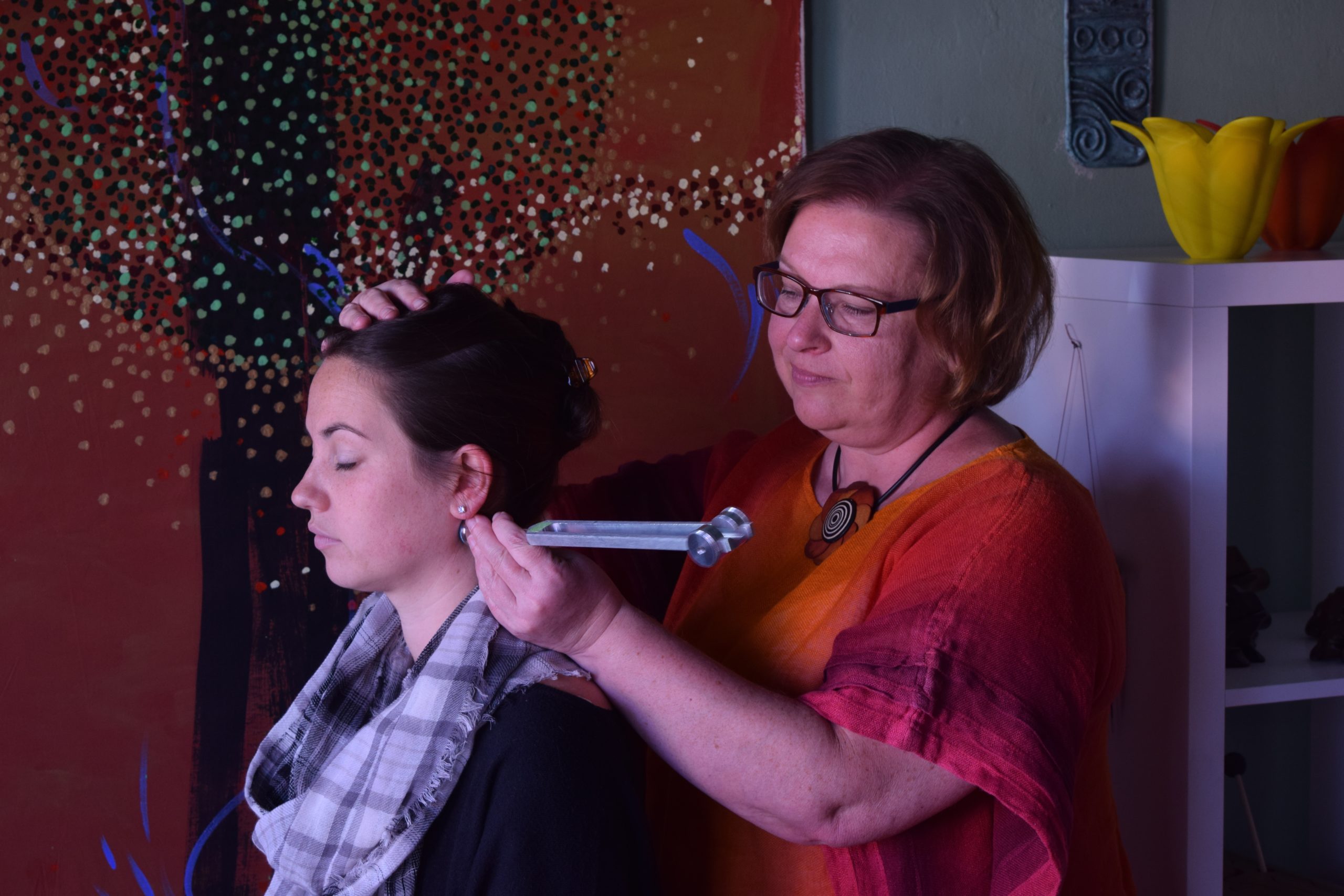
Minna working on someone using tuning forks: activating the Vagus nerve. Courtesy: Minna.
Nearly everything I have learned about energy work and healing comes from that place of trusting. Even Reiki which is said to work remotely is based on this premise. For example, from the training I learned from my Holy Fire teacher is that the remote symbol can be used randomly.
By randomly, I don’t mean not focusing or intending, but rather than send Reiki to a specific part of the body to be healed (using the remote healing symbol), you can create the intention that the Reiki does what it needs to do — in divine timing and for the client’s best possible outcome. Sometimes that magical quantum healing field can perform more effectively on its own accord through intention, because that anxious and worrisome mind out of the way.
Like all effective healers, showing compassion and empathy by truly listening to what is needed is key. Sound Healing says Minna, “is about deep listening, walking in between the worlds like a shaman, giving and receiving at the same time. Understanding this will give you confidence and keeps you present while doing the work.”
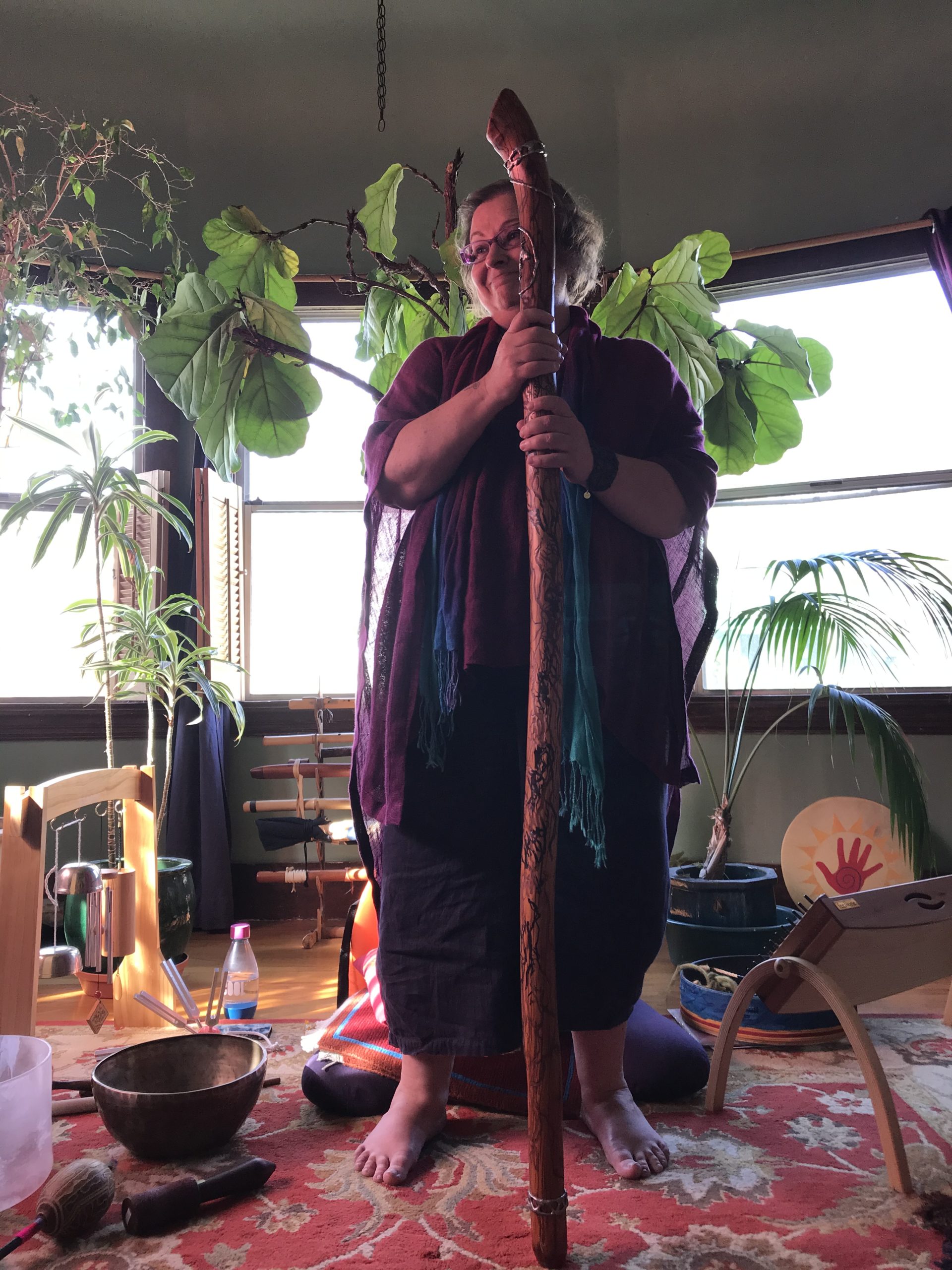
Minna teaching her sound healing course in Oakland
It’s so important that as a practitioner (and as the one receiving the healing) that you come from a place of no fear and at a minimum, a sense of curiosity. This curiosity opens up the possibility that you ‘can’ receive healing in a different way — that you are open to learning, experiencing and going with the flow.
Going with the flow is necessary for both the healer and the one being healed. Being awake to what is showing up in any given moment is instrumental here. For example, you may get clues when the client first walks in the door, by seeing their body posture, breath, psychology and physical balance. Then when you do your in-take, you’ll also pick up other clues such as their attitude about situations, relationships, their family history and experiences and more.
What Instruments are Best?
People often ask me when I choose a particular crystal bowl or decide to use the Koshi chimes in a meditation or leave them out, what instrument is best? Sometimes it will be clear that one instrument is better over another, but in other cases and I’d argue most cases, you’ll need to test and tweak from there. This is because we are working with energy — yours and the individuals you are working with. Even if you resonate with a particular instrument, it doesn’t mean your client will equally resonate with it.
You want to choose instruments that resonate with your own body as well as your client’s body, at a particular time. I add the latter because you will quickly find what works with a client on week one may not the best choice on week three and so on.
Tuning forks are less common than more traditional and known instruments such as Tibetan bowls, drums or chimes.
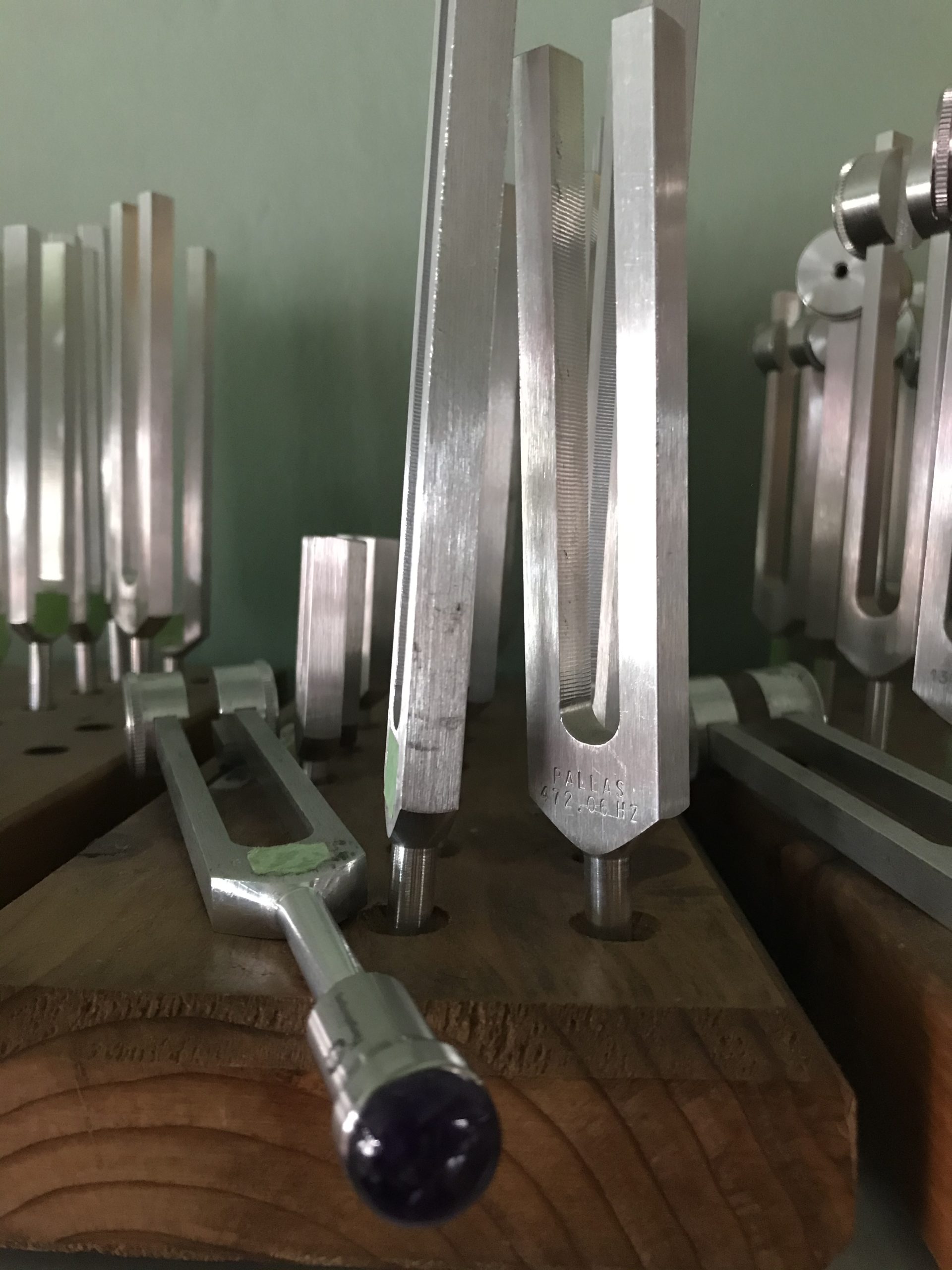
Weighted and regular tuning forks (as sets)
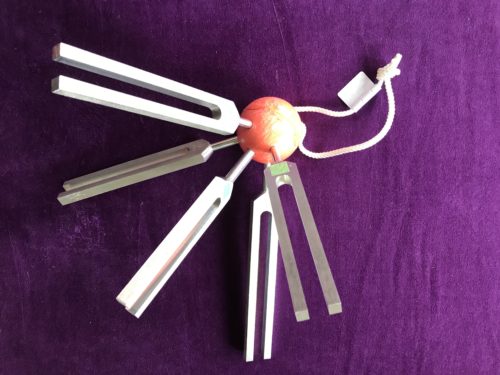
And, there are so many different types of tuning forks to choose from as well — note the variety above and below. In Minna’s class, we worked with both unweighted and weighted tuning forks, each one creating a slightly different effect and result.

Koshi chimes are a lot of fun to work with (below). Made of bamboo, they’re a treasure to incorporate into your sound healing experience. We use them often with meditations, both at home, and those we weave into our Zoom and in-person courses and circles.
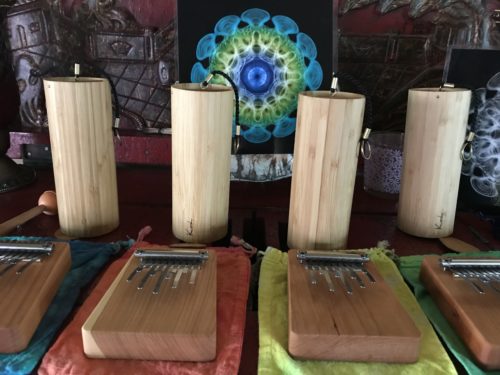
There are also more subtle sounds you can create that add gentle frequencies into the mix — and sometimes, the opposite of what you think will create the desired result actually does — subtle frequencies often go much deeper into the body and you can practice this by seeing what resonates with you and what doesn’t, from chimes and djembe drums to the kalimbas, the softer hand-pan drums and crystal bowls.
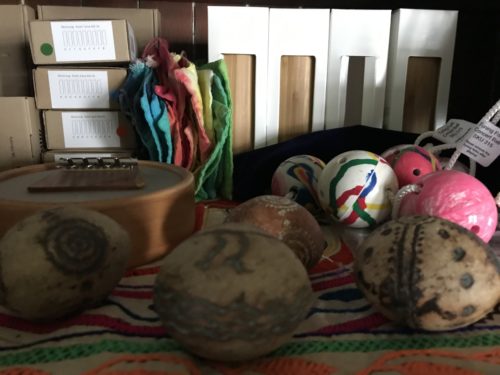
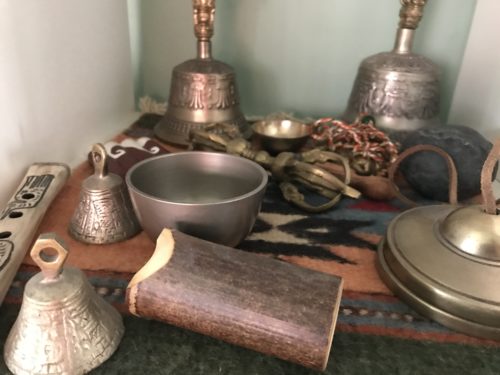
Bells and copper Tibetan bowls
There are countless kinds of bowls too and they vary as much by shape as what sound they are designed to create and where they are made. We work with Tibetan and Nepalese bowls but as you can imagine, you can get them from countless parts of Asia as well as other countries around the world. Many cultures use bowls not just for healing but in traditional ceremonies and customs as well.
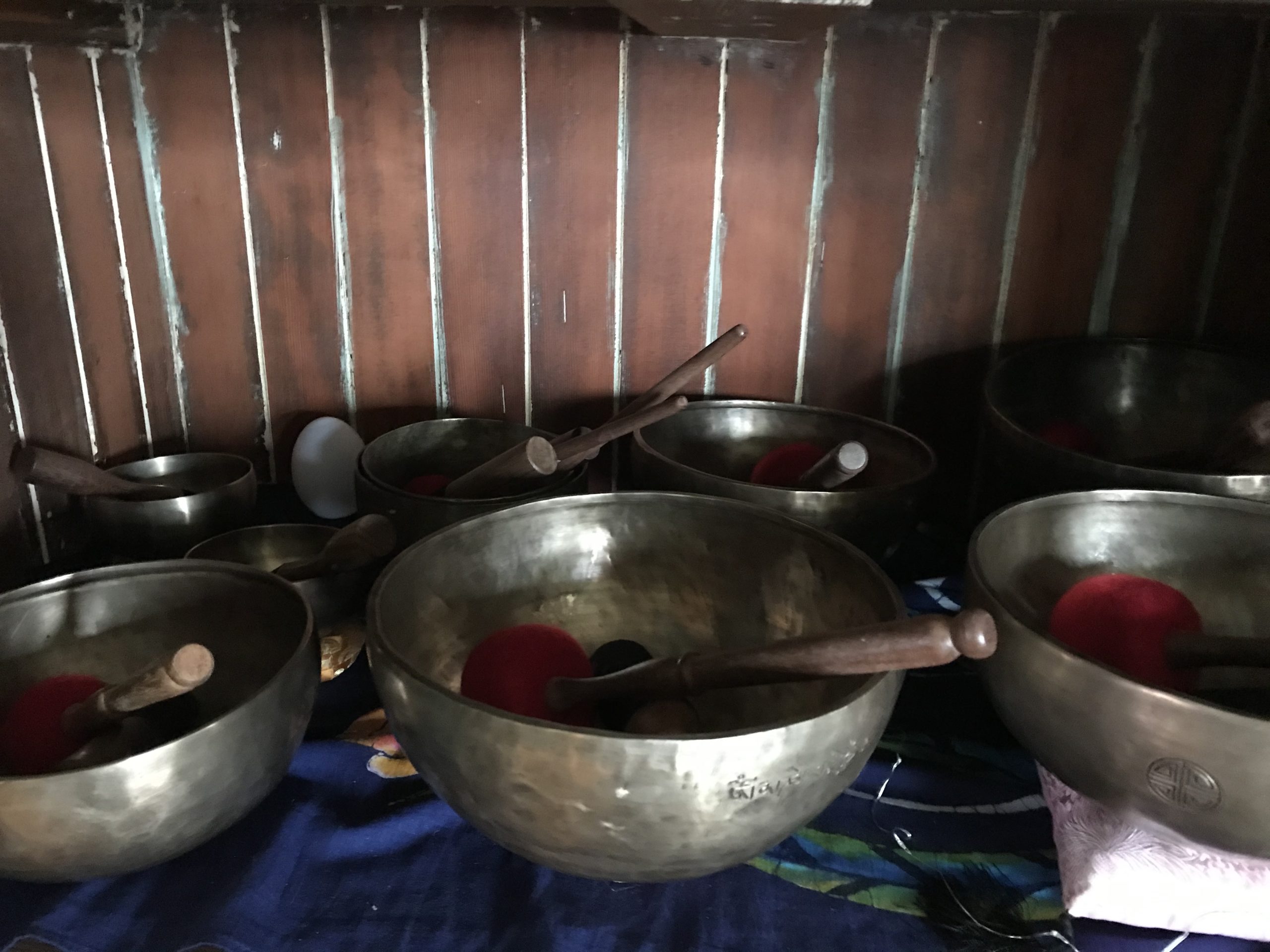
Tibetan and Himalayan Singing Bowls
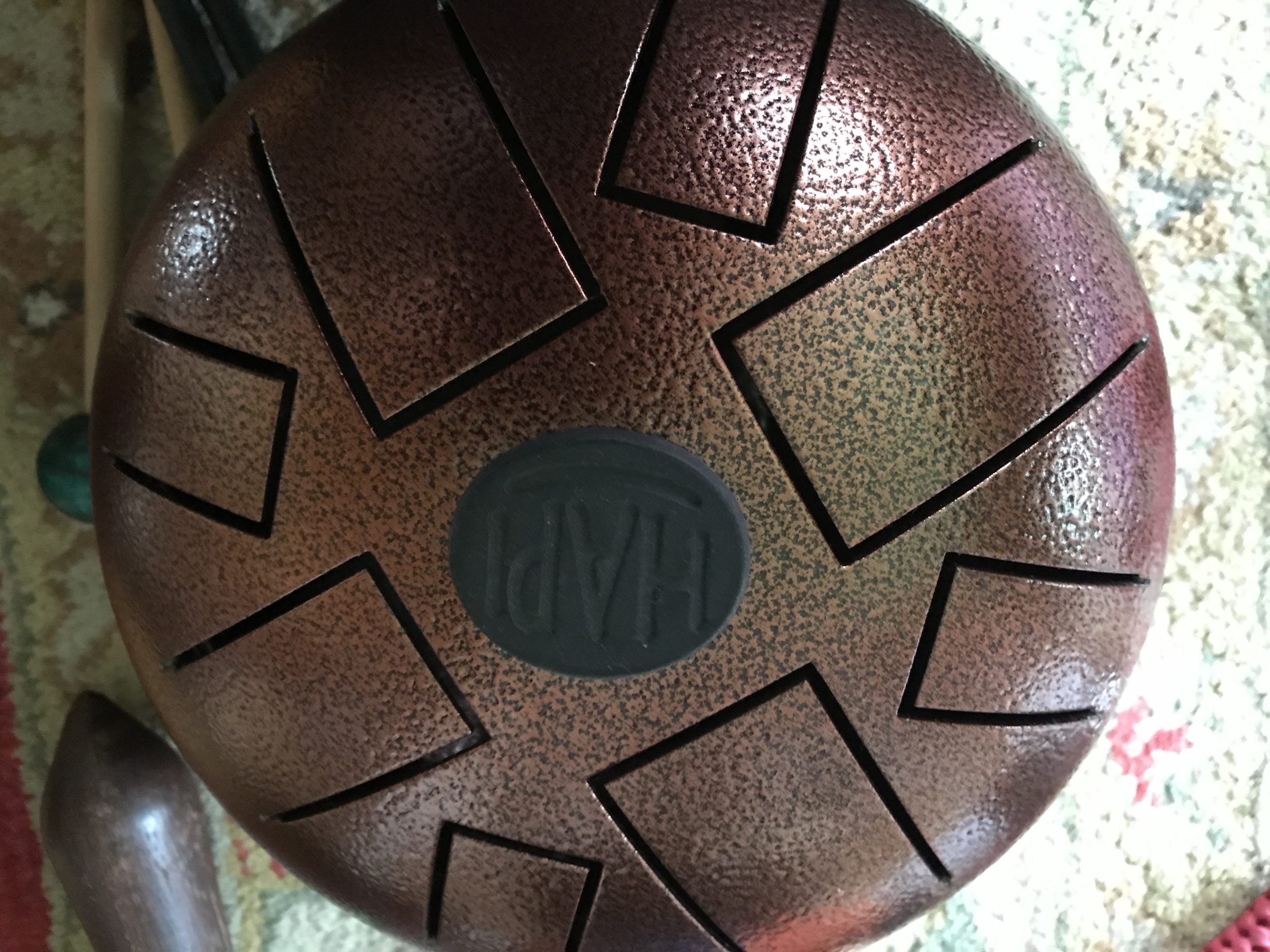
A hand pan drum (HAPi). They all range in size, tone and even notes that you can choose.
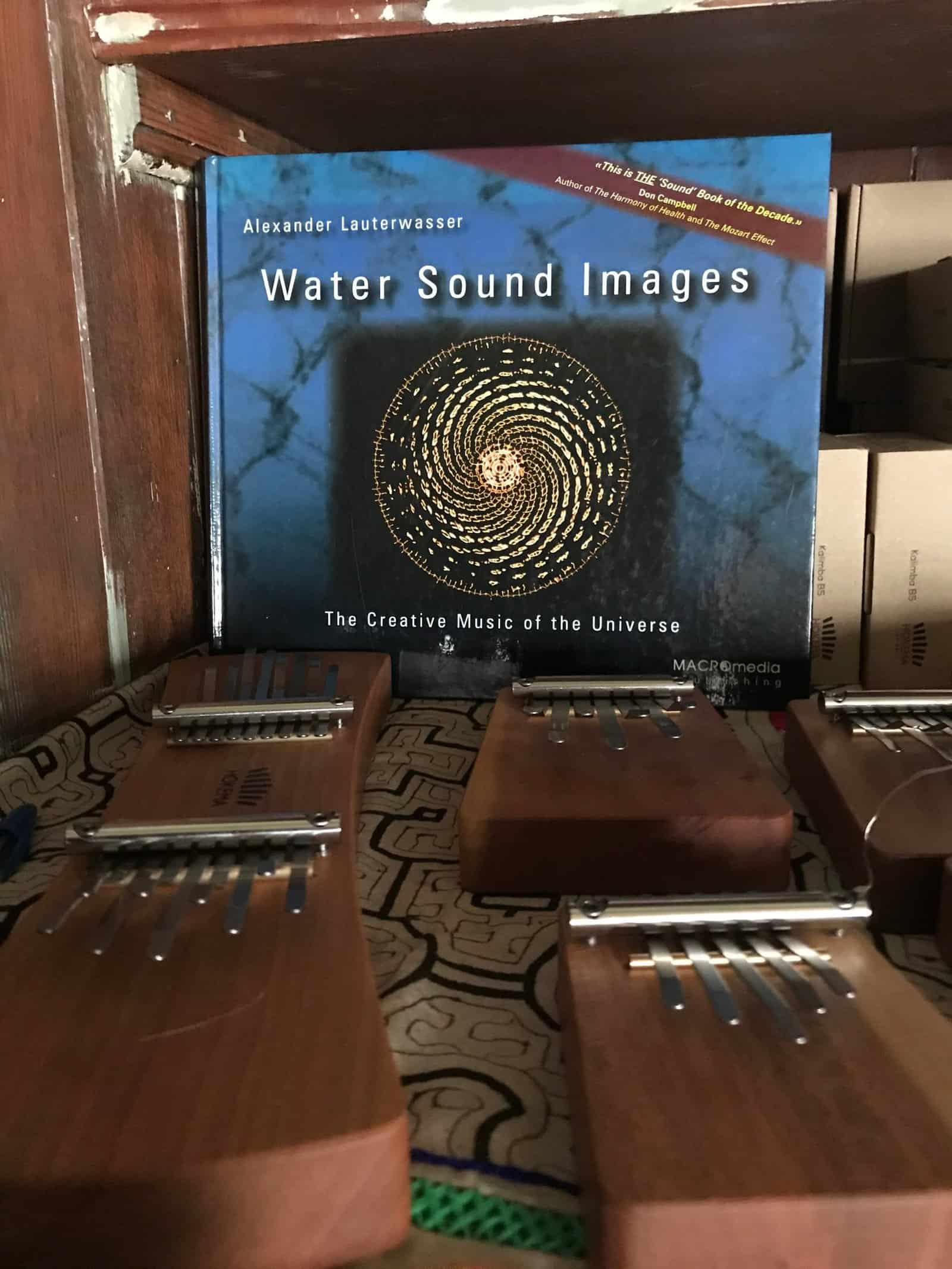
Kalimbas and the Water Sound Images book
At the beginning of the class (after much of the history and preparation was completed), she had each student select an instrument to work with and one instrument alone. When you’re faced with countless choices (as we were in the class), it’s easy to get distracted and want to play with all of them. Sound healing is a great example of the rule that ‘more doesn’t mean better.’
Remember that part of self-healing is also about trusting your intuition and trust — you need to start your journey by going inward. Those who have gone to the dark side of the soul and back know precisely what I’m talking about here.

Meditating before picking up an instrument is also helpful. When you’re in a calm and grounded place, gently approach an instrument you’d like to connect to with your hands and feel its vibration before you even touch it. Remember that energy work can be very subtle and sound is part of the creation. Only when you feel that you have a true connection to the instrument should you start making sounds very gently and in a subtle way.
Minna says, “while you’re working with it, notice how it feels in your body. Listen to the tones your instrument makes paying attention to the shifts in the tone. Try different rhythms and loudness. Match the tone with the instrument with your hum. Match any overtones your instrument is making with your voice. After at least five minutes of creating just one tone with your voice, start making melodies, if you are called to that. Keep notes of your practice.”
Below, I am practicing on a pan-drum as a way to learn how to connect to one instrument in an intimate way — here, I went slowly, listening for not just sound but for space and energy as well.
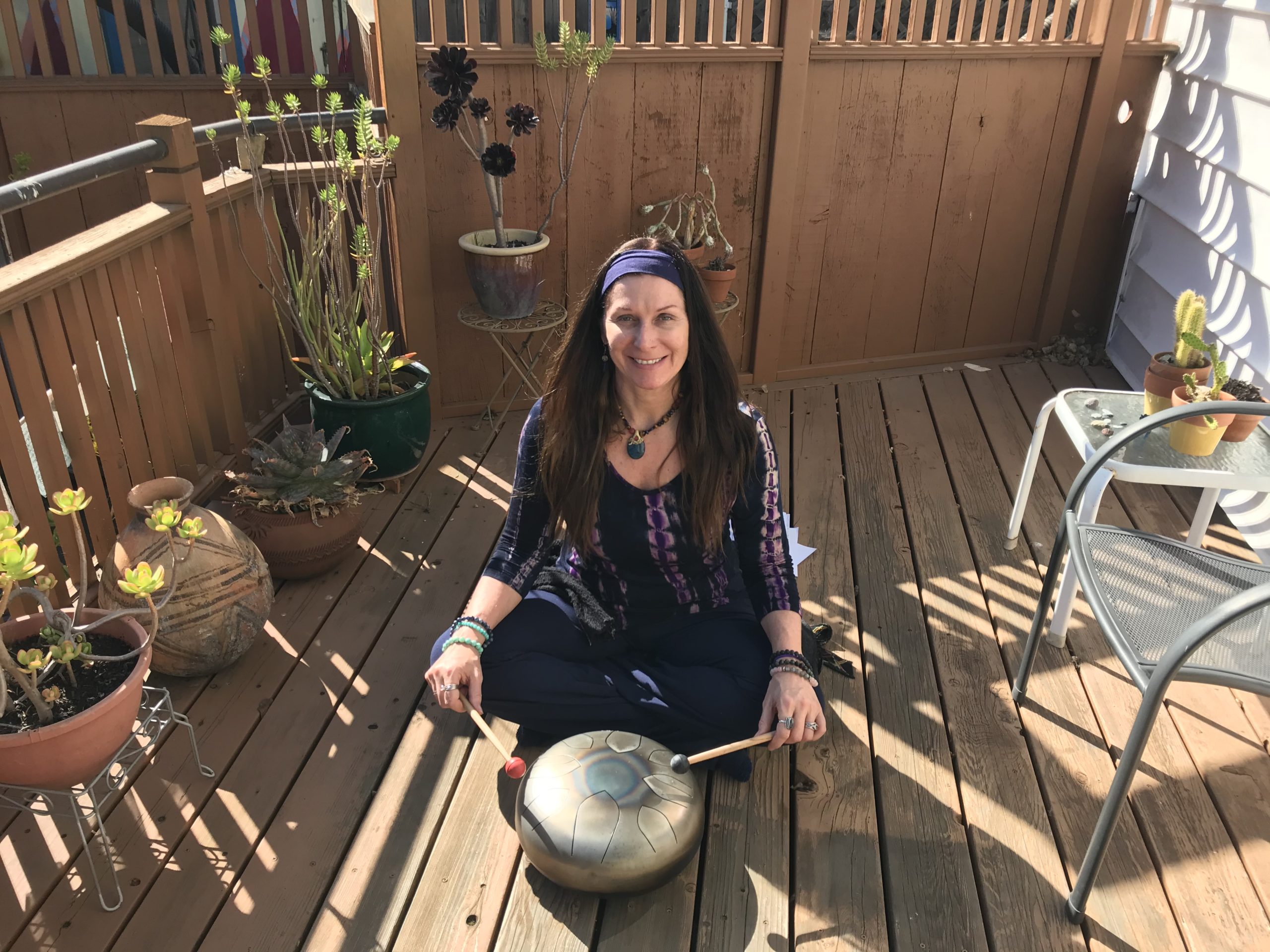
You see, like all healing, you need to test different methods because you are dealing with energy and frequencies (which come from all instruments) impact energy. This is why the ‘going inward’ piece is such an important part of the journey for all those involved. You must be honest with yourself and truly want to heal (and to be healed).
Letting go and surrendering is such an important part of all healing, so connecting with what is and what isn’t is part of that process, and that includes the instruments you decide to work with each and every time.
“You need to develop a relationship with your instruments first. It needs to resonate with you so you can understand how to make it resonate most effectively with others.” – Minna
Below, Minna shows us the ever so fascinating Monolini instrument, which she plays over one of the students.
Using the Monolini
Useful for meditation, therapy and sound massage, the Monolini combines light overtones with the sound of low, vibrating bass and fifth strings. You can get these over on the Feeltone website where you can learn more about them as well. Although much different to a harp, it has a similar relaxing and soothing sound to it.
I haven’t had a chance to really work with this instrument except for in her class, so I can’t speak to how effective it is, but we love the sound and you can get them in different cords as well, i.e., A, C, F, D as examples. There’s also something called the Monolina, which is similar but can be used as a body monochord, applied directly to the body. You can listen here to get an idea of what it sounds like.
The other thing I would personally add is that practicing instruments in nature can be very profound. Simply being in nature is very grounding and is a great way to get back in tune with yourself by harmonizing with your own bodily system as well as the sounds around you, like birds, the rustle of leaves, wind and so on.
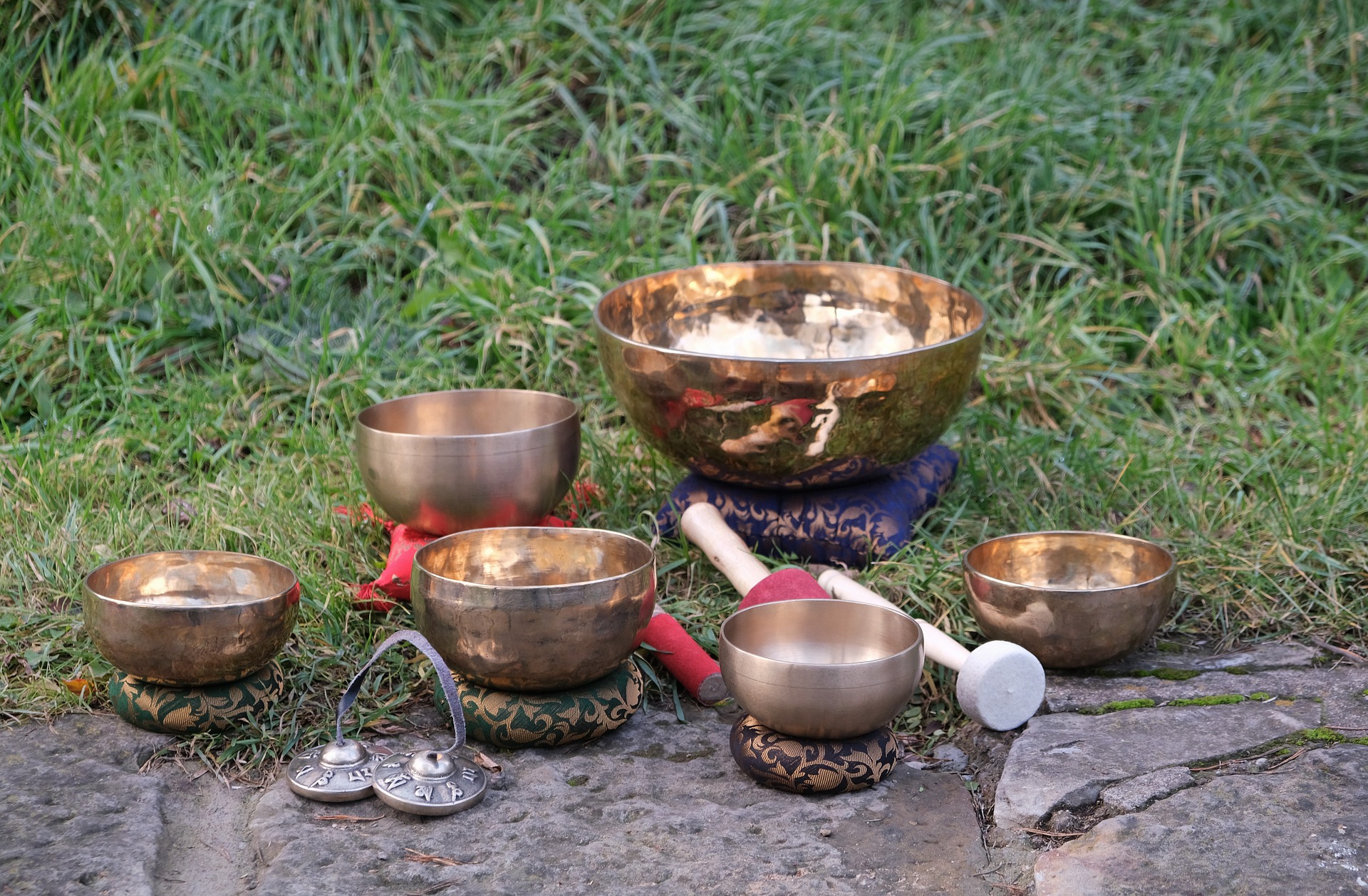
What about the Voice?
Ahhh yes, the voice. The voice is its own powerful instrument and as many know, can be extremely healing. You can even start a session with a client using the voice after a series of breathing exercises to get centered and a short meditation.
The other thing you can do before you begin is to tap the body, especially the arms and the chest around around the heart. By tapping up and down your arms on both sides as well as across the chest, you are assisting the heart channel in opening which is a wonderful thing to do before you begin. A great immunity boost can also be done which is tapping the middle of the sternum.
In her class, we started each morning humming together. It doesn’t have to be complicated at all — simply by humming oh’s and ah’s together for about 3-5 minutes can get you into resonance with yourself, others around you and the instruments.
“Voice is the most powerful resonance.” — Minna
Even after the oh’s and ah’s, if you and others you are working with are open to it, you can spend a few minutes chanting with the bowls using vowel sounds. You will be surprised at just how relaxed and connected you feel after such a short exercise. Let’s face it — chanting has been around for thousands of years as a way to connect to higher levels of consciousness.
And, you can even SEE the resonance of the voice, and of course it changes depending on whether you are speaking (gently and in a loving voice versus harsh and angry tones), chanting, singing and so on.
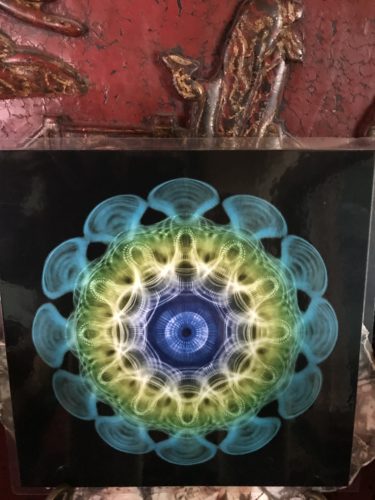
A digital representation of speaking (a voice)
The Power of Voice as Resonance
Voice carries resonance which can impact the body in profound ways. An interesting read is the Gutenberg Project which talks about the resonance of singing and speaking. If you consider that most of the body is made up of water, then if it can impact the body, then what about other bodies of water?
In his powerful book Water Sound Images: The Creative Music of the Universe, photographer and researcher, Alexander Lauterwasser demonstrates this visually.
“Virtually all of the world’s creation myths describe the formation of the primordial universe as a gradual solidification from a liquid state under the auspices of sound… the firmament manifesting as the Word of God, Nada Brahma, the world is sound… a world sung into being. Through our contemporary, scientific lens, we now conceive of all form as resonance fields–structure, as sound coalescing into matter.” — Water Sound Images book
In the book, he shows that how projecting audible sound frequencies into water, delicate harmonic patterns emerge, whose structures mirror those found throughout the natural world–from single-celled sea creatures to the formation of galaxies. We find the book powerful and a must read.
Now let’s show how resonance works with water from playing a Tibetan bowl as Minna demonstrates in her class below.
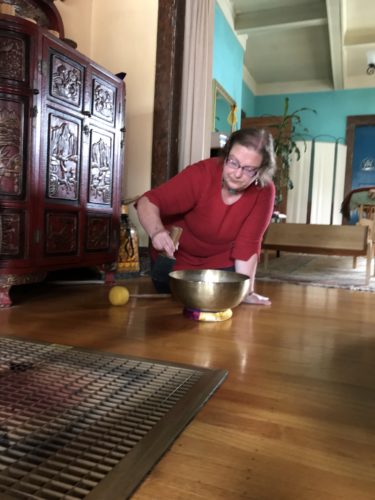
Above and below, Minna shows us how water responds to playing a copper bowl and how we can learn from how much vibration to use by watching how it affects water — as a reminder, what percentage of our body contains water? You do the math and will obviously get the relevant point here.
There are a myriad of chants you can try as well and I’d also argue here again that if you do do the exercises in nature, even better. If wanting one aspect of research here, read this article on Nature and the neurophysiological correlates of chanting. One of the reasons however I don’t personally like traditional scientific studies is that it often doesn’t include ‘belief systems’ into the mix which is such an important part of the outcome.
You may be feeling, “So, I still don’t understand what instrument is best for a situation.” And, the truth is that you won’t until you practice and experiment.
What I learned from Minna and other practitioners over the years is this: intention, intention, intention. You need to choose your instruments with intention – determine what the person will most resonate with and go with that one, setting your intention.
Connecting to any instrument is a bit like a relationship you might have with a horse. For sound healing to work, you have to have intention and feel grounded with your instrument. And one other thing that I’ll add since so many people forget this: Be in your body, not in your head. This is part of all holistic healing practices — if you’re in your head before you start a session, do anything that grounds you to get you back into your body.
We also practiced various ways to diagnose an issue using instruments, for example: you can diagnose the symptoms and blockages based on what shows up with the instrument – or what shows up IN the instrument. Says Minna, “If you hear higher pitch sounds coming from the bowl, then there’s tension in the body that need to be released.”
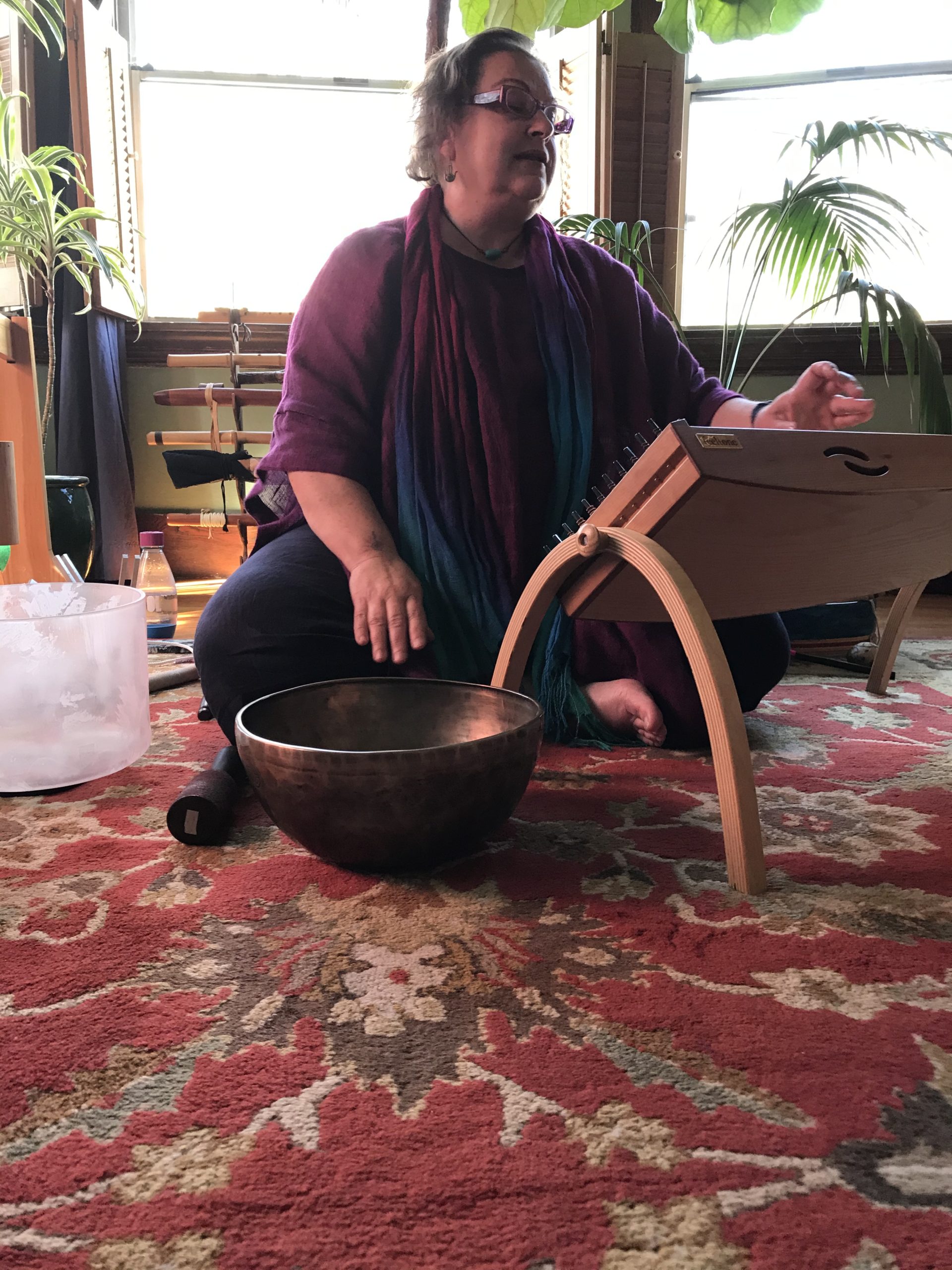
Above and below, Minna teaching in Oakland California
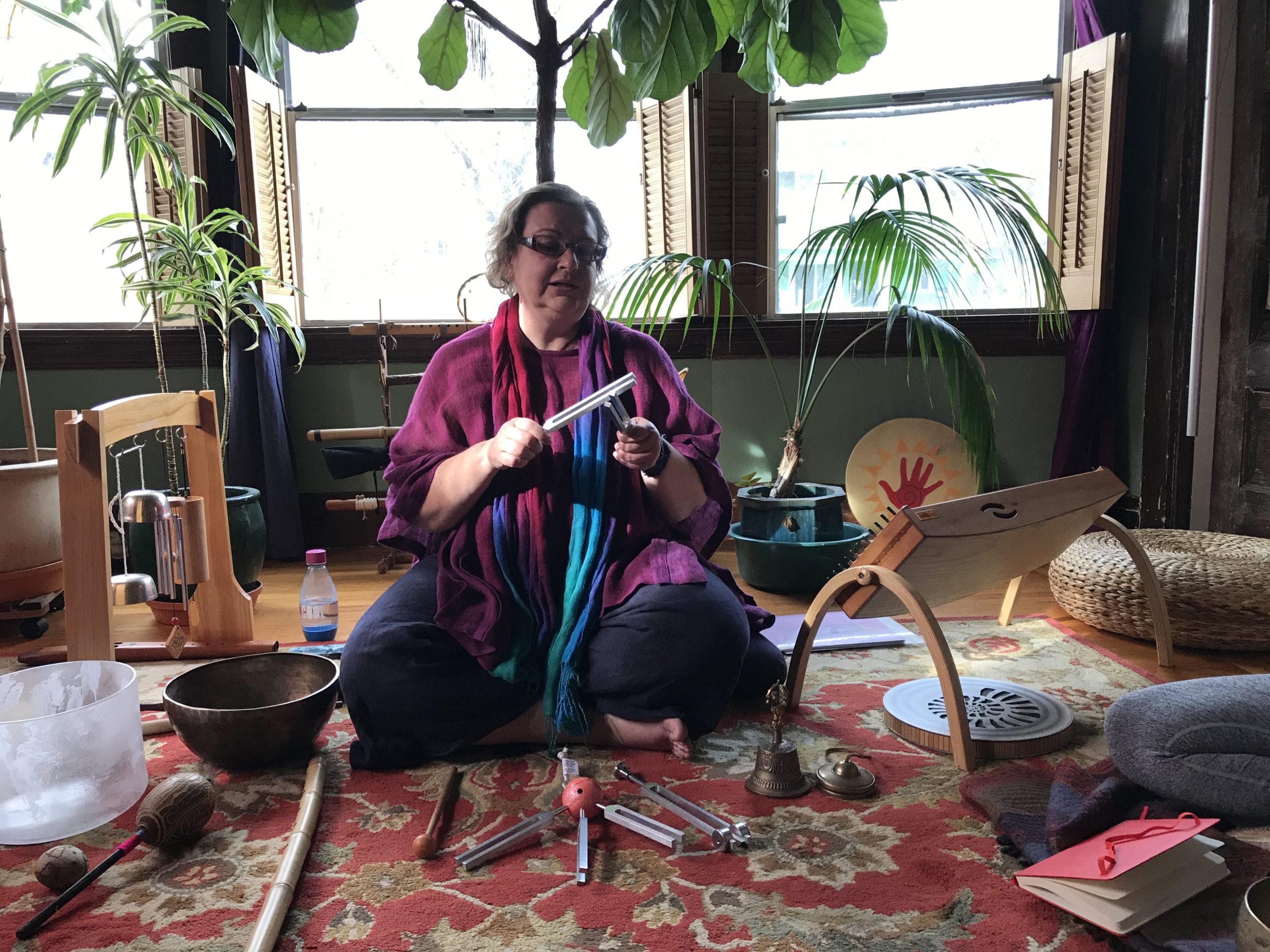
We use the chakra system all the time when working with others, so its helpful to understand the body’s energy system which includes our chakras. Most people only think of the traditional 7 chakras however there are many more that extend far above and below the body. We also work with something often referred to as the Merkabah which takes the form of a circular shape, and here also lies a lot of magic when it comes to healing.
Whether you resonate with the chakra system or not, to become a master at healing the body through energy work and sound, you need to know about our system energetically. Consider all holistic ways of healing, from meditation, breathwork, and Reiki to Acupuncture, Cranial Sacral, Feldenkrais and Acupressure.
Below, Minna shows us the Elemental Lines
She says that you can use either tuning forks or tingshas (something that has a long tone and you can hold in your hand) to release energy. “The bowls around the body are used differently. You can place the bowls around the body based on sacred geometry patterns creating triads, squares, stars, etc. When you understand the patterns and the general principals how energy moves, you can again either release or energize the body.”
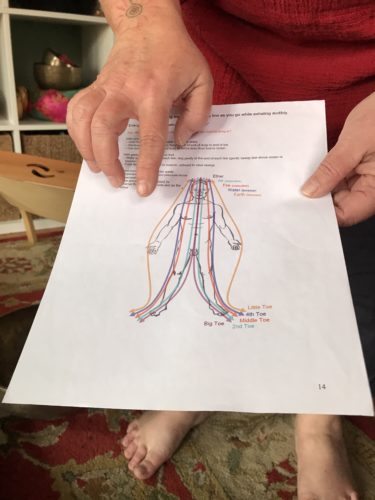
Minna explains the Elemental Lines that run through the body.
Whether you’re interested in eventually becoming a sound healer, using the power of to supplement something you already do (such as massage work or even healing through essential oils), or are simply curious about how to use it to add more calm and serenity to your daily life, it’s worth taking a class or two.
More about Minna & Her Work
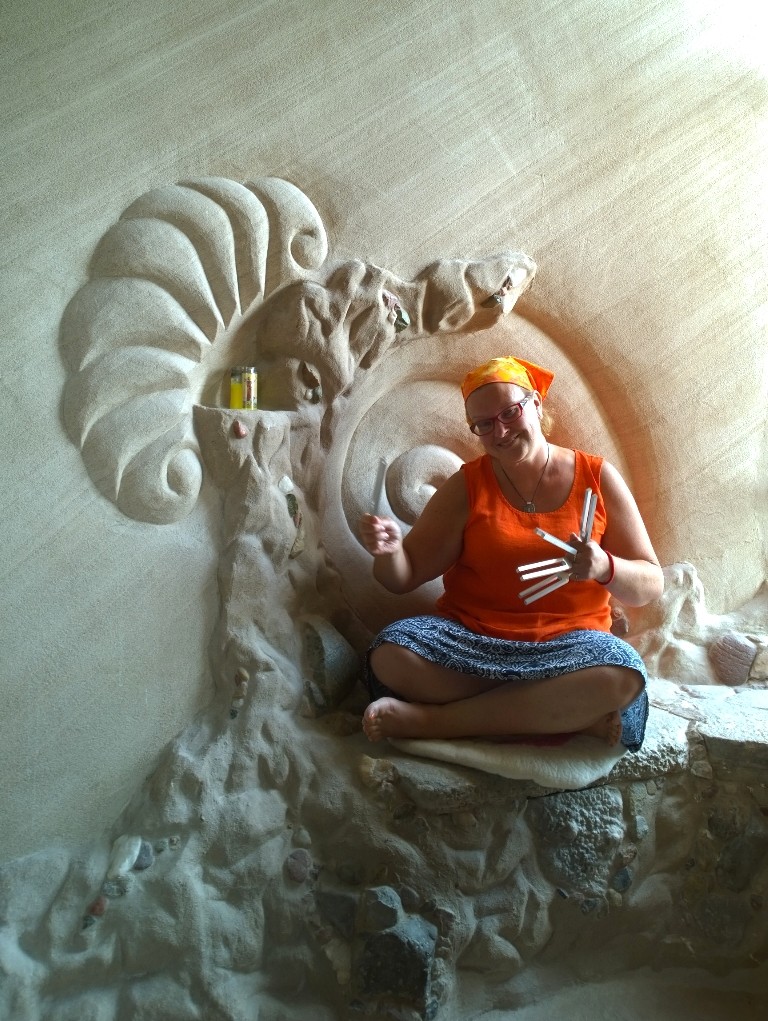
Minna. Credit: Minna.
Minna is the founder of Harmoniaalto – named for a Finnish word that means a wave to harmony. Minna says, “sound is a wave that carries us back to a sense of harmony. It’s a place where the heart and the brain unite and work together, where everything is released and you feel inner peace: a place beyond stress, anxiety and even pain.”
As a certified sound practitioner, she founded Harmoniaalto, as a commitment to establish ways to transform the way we approach sounds within and around us.
She was in corporate life for around 17 years leading a stressful life — she turned to various forms of meditation, yoga and other somatic practices as a way to get into balance and harmony until she was introduced to the use of sound vibration as a vehicle for well-being and balance.
For her, this discovery triggered profound and valuable insights on ways to assist people to become more present and to foster relaxation in the body and the mind by implementing sound-centered tools.
Check out her website for more information including when you can take advantage of upcoming classes.
Here’s a short video of Minna teaching her Sound Healing Class.

Renee Blodgett is the founder of We Blog the World. The site combines the magic of an online culture and travel magazine with a global blog network and has contributors from every continent in the world. Having lived in 10 countries and explored nearly 80, she is an avid traveler, and a lover, observer and participant in cultural diversity.
She is also the CEO and founder of Magic Sauce Media, a new media services consultancy focused on viral marketing, social media, branding, events and PR. For over 20 years, she has helped companies from 12 countries get traction in the market. Known for her global and organic approach to product and corporate launches, Renee practices what she pitches and as an active user of social media, she helps clients navigate digital waters from around the world. Renee has been blogging for over 16 years and regularly writes on her personal blog Down the Avenue, Huffington Post, BlogHer, We Blog the World and other sites. She was ranked #12 Social Media Influencer by Forbes Magazine and is listed as a new media influencer and game changer on various sites and books on the new media revolution. In 2013, she was listed as the 6th most influential woman in social media by Forbes Magazine on a Top 20 List.
Her passion for art, storytelling and photography led to the launch of Magic Sauce Photography, which is a visual extension of her writing, the result of which has led to producing six photo books: Galapagos Islands, London, South Africa, Rome, Urbanization and Ecuador.
Renee is also the co-founder of Traveling Geeks, an initiative that brings entrepreneurs, thought leaders, bloggers, creators, curators and influencers to other countries to share and learn from peers, governments, corporations, and the general public in order to educate, share, evaluate, and promote innovative technologies.

